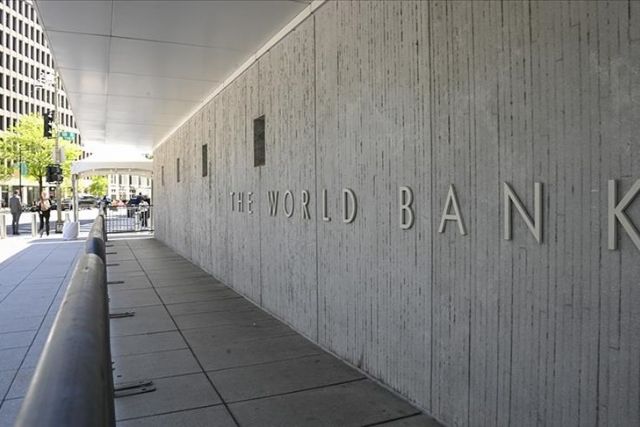Earliest love poem, oldest peace treaty: Türkiye’s first museum and its marvels of history
The Istanbul Archaeological Museums is arguably Türkiye’s most famous and a monument of history in its own right

ISTANBUL
The world's earliest known love poem, the oldest written peace treaty in history, the Alexander sarcophagus: these are just a few of the truly exceptional pieces housed at the Istanbul Archaeological Museums.
Türkiye's first museum is arguably its most famous and a monument of history in its own right.
Its establishment marked a pivotal moment in the Ottoman Empire's journey toward modernization, a testament to the cultural renaissance that took place alongside revolutions in fields such as medicine, law and technology after the transformative Edict of Tanzimat in 1839, the harbinger of an era of groundbreaking reforms.
Today, the museum boasts nearly half of Türkiye's entire collection of historical artifacts.
“In Türkiye, as far as I know, all of our museums have close to 3.5 million artifacts. Approximately 1.5 million of them are in our possession,” Rahmi Asal, the museum director, told Anadolu.
“This museum possesses a truly exceptional collection, both in terms of its uniqueness and its vastness in numerical terms.”
The complex is located in the very heart of Istanbul in the Sultanahmet neighborhood on the historical peninsula of the Fatih district, near the shores of the Istanbul Strait.
While its official opening date is June 13, 1891, the foundation of the Istanbul Archaeological Museums actually goes back to 1845, according to Asal.
It consists of three main units: the Archaeological Museum, the Museum of Ancient Oriental Works, and the Tiled Kiosk Museum.
The first museum building was a storage-like section for antiquities and ancient weapons located at Hagia Irene, a 6th-century Byzantine church in Istanbul that currently serves as a museum, just a few hundred meters away from the complex.
“It was a warehouse that could only be visited with special permission. It was not a museum open to everyone,” said Asal, who started working at the museum in 1987 as an intern.
It became the Imperial Museum in 1869, before being relocated in 1881 to the building that houses the Tiled Kiosk Museum today, built in 1472 as a hunting lodge for Ottoman ruler Mehmed the Conqueror.

The legacy of Osman Hamdi Bey
The move marked another major moment in the museum's history: the arrival of Osman Hamdi Bey as its director.
Osman Hamdi, who lived between 1842 and 1910, was a pioneering painter with a deep love for archaeology and history.
Today, he is also known as Türkiye's first archaeologist.
“When he became the director of the museum, it was opened to visitors. On Wednesdays for women and for men on other days,” said Asal.
“In other words, that is when it actually became the museum that we know today.”
As Osman Hamdi carried out excavations all over the empire, the number of pieces at the museum suddenly increased, he added.
“He initiated the first Turkish excavations,” Asal said, explaining that regulations were enforced at the time to limit the export of antiquities.
As artworks and artifacts poured into Istanbul, the existing building could no longer accommodate the vast collection, he said.
“When they moved here, the museum had around 800 to 1,000 pieces, but the number soon surged into the thousands,” said Asal.
During an excavation in Sayda, or Sidon, now in southern Lebanon, between 1887 and 1888, Osman Hamdi found the necropolis of the Phoenician King Tabnit, the Alexander sarcophagus and numerous other artifacts.
“That actually changed the fate of Turkish museology,” said Asal.
With the museum running out of space, Osman Hamdi and his colleagues “went to the palace, to Sultan Abdulhamid II, and conveyed the need for a new building.”
“This location, right here, was chosen. The entire museum that you see here was completed between 1891 and 1907 and opened to the public,” he said.

A microcosm of the Ottoman Empire
Over the years, the museum building has undergone several renovations. The most recent and extensive restoration project commenced in 2012 and lasted a decade.
“Our Treasury Hall, Coin Hall, Troy Hall, and Archaeology Science Methodology Hall are all open now,” said Asal.
Ongoing restoration work for the Ancient Oriental Works and the Tiled Kiosk Museum is expected to be completed within the next one or two years, he added.
“This museum is a treasure trove of milestones. For instance, it houses the world's earliest known love poem, the oldest written peace treaty in history, known as the Treaty of Kadesh, and what I consider to be the most significant sarcophagus in the world, the Alexander sarcophagus,” said Asal.
“There are numerous extraordinary architectural pieces, depicting deities such as Zeus, Poseidon, the god of medicine Asklepios, and also a multitude of theater works. They are all here.”
The Istanbul Archaeological Museums is “one of the world's top five when it comes to museum studies and archaeology,” Asal stressed.
“It is also one of the first 10 museum buildings ever constructed worldwide,” he said.
For Asal, the museum is a testament to the “enduring influence of the Ottoman Empire or, more precisely, its lasting legacy.”
“It's because this museum has artifacts from every corner of the Ottoman Empire,” he explained.
“If you were to take a world map and mark the regions where our artifacts came from, it would outline the very boundaries of the empire.”





